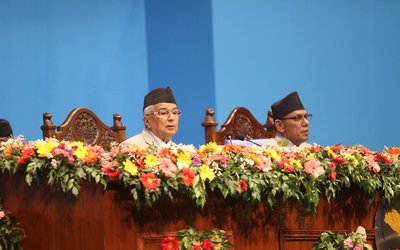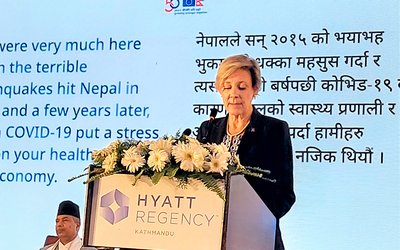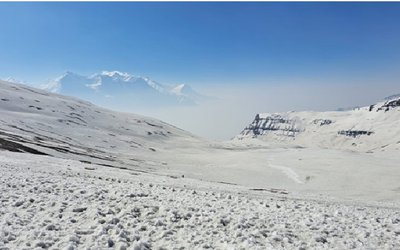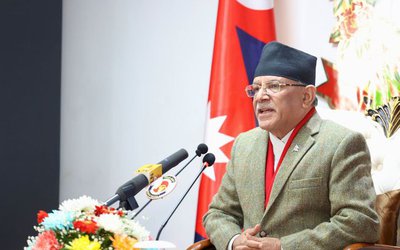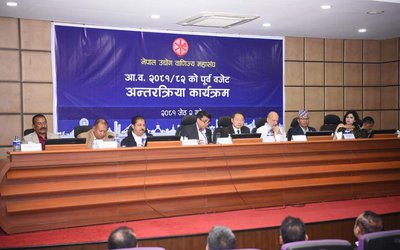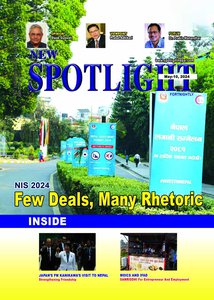The final object of our spiritual journey is to attain absolute knowledge, but it is very difficult to convey the meaning of the word absolute. It cannot be explained through philosophy but can be experienced through the act of living into life. Using Eckhart’s words, it can perhaps be expressed as “I am as I am before I am this or I am that. Here “I am as I am” represents the absolute reality while “I am this” or “I am that” represents the relative. But we cannot arrive at absolute knowledge through simple progression in consciousness. In fact, the absolute cannot be conceived. “I am as I am” is not a conception, but a fact for the person who knows it through direct experience. This is possible only through a qualitative transformation which implies a hiatus in the transition from relative to absolute knowledge. Transformation in the domain of relative can be explained through evolutionary progression, but the transition from relative to absolute involves transformation which is qualitatively different from simple evolution. It occurs through evolutionary leap. For example, our bodily transformation is more obvious than our mental transformation but the latter is not easily obvious, but the quality of transformation is different in the two cases. We do realize that we experience graded levels of life, and that the experience of life is more easily understood on its lower levels related to the physical aspects compared to that on its higher levels related to mental and psychical aspects.
On its physical level, life is subject to various physical demands. The mind thus controlled is not the Self or the “I”. In its mental level, life is controlled by emotions and feelings i.e. anger, hate, jealousy etc., and by joy, love, compassion etc. on its higher level. Our mental attributes such as emotions and feelings are heavy, dull and lurid and have negative impact on us while those of the second category can raise us to higher levels represented by love, peace, and mystical experiences. The second category of experiences can enable us to have a “feeling realization” of our spiritual life, however, these are initially of temporary nature and cannot sustain themselves for long without invoking them again and again. This invoking is possible only when we are able to establish some contact with the higher existence, but the more important requirement is to make that connection permanent otherwise there always remains the difference between knowing something and feeling it particularly emotionally. Feeling may then overtake knowledge. Knowledge too connotes different levels of knowledge depending on whether it is gained through rational intellect or through conceptions or through perceptions and intuition. The important point is that knowing and feeling or the mind and the heart must complement each other. The interrelationship between our innate urge to know the truth from below and the pull from above must complement each other. As said by Sri Aurobindo: “It is possible for the lower to transfigure itself and put on the nature of the Higher Self and the higher to reveal itself in the forms of the lower”. The innate urge to know the truth can support itself through psychological transformation of the mind which makes room for the Higher Self to reveal itself by helping us to undergo spiritual transformation. This depends on two complementing requirements: constant practice from our side, and overt help from above. The final transformation occurs when we rise from the psychological transformation of the mind to our spiritual transformation. This is the transformation from relative to absolute.
On the mental level, we can use our mental faculty as a rational tool to interpret the outer world in terms of something concrete, objective and practical, but we can also think in terms of something that is subtle. But our relation with this subtle is not sustained; it is often in the form of “peak experiences” which come and go, and cannot permanently reside there, but it is also possible to transcend these peak experiences through the wisdom of knowledge or through “the higher mind” which helps us to penetrate into the realm of higher consciousness. The first requirement is that reason and feeling must fuse together into an inner peace, into coherent and spontaneous actions. At some point of our spiritual journey, the intellect must acknowledge its limitations and cooperate with positive emotions and feelings which represent the finer instruments of knowledge. Emotions or feelings can raise us to higher realms, for example, when we use the power of music or of compassion or mystical sense of beauty. But initially they are likely to provide only the partial view of reality unless supported by higher intelligence including insights, inspirations, intuition and intuitive discernment etc. This higher intelligence does not so much exclude the analytical reason but rather lays stress on the fact that analytical reasoning, if not supported by the sweetness of the heart cannot go beyond its own rationality. The higher intelligence must also be supported by psychological experiences which can be used to transcend the logical mind.
The innate urge to know the truth of these uplands combined with the fire of heart not only holds the premise of the reality but also convinces us to move ahead without the aid either of philosophy and religion. We then directly move into spontaneous action. Positive emotions are helpful in progressing in consciousness but they could also act as a trap when we become captivated by their resultant mental peace accrued from external, intermittent mental satisfactions and temporary exaltations. The real progress is possible when reason and feelings and philosophy and religion perfectly fuse together into spontaneous action. But the journey ahead is supremely personal. It is entirely one’s own making, but because it is one’s own making, one is also free not only from philosophy, religion but also from authority. This freedom from philosophy, religion and authority leads to the unfolding of the Self through different levels of consciousness which may include not only evolutionary progression in consciousness, but also evolutionary leaps in consciousness.
In all types of our spiritual endeavors, philosophy is our first aid. It is only when we begin to philosophize that we can see the events and things in their proper relationships i.e. relationship between the outer and the inner worlds, between the body, mind and the soul; between the grossest level of existence i.e. matter and spirit. As said by H. P. Blavatsky matter as spirit at its lowest point of manifestation and spirit as matter in its highest evolutionary state. Our evolution is our journey from matter to spirit. Quoting again Sri Aurobindo: matter is the base, spirit is the crown and mind is the link between the two. As also said by Radhakrishnan: Everything is relative until we arrive at the Spirit.
The mind establishes the link between philosophy and religion, but since our mental capacity is undergoing continual change, the interrelationship between philosophy and religion is also undergoing transformation. Due to developments in the field of education, communication as well as in matters of physical wellbeing, our mental capacity is also expanding with increasing rapidity particularly when it is related to the quantitative aspect of this relationship. The intermingling and assimilation of different religions, cultures and philosophical ideas has made them all encompassing, universal and capable of speaking across the barriers of religions, cultures and philosophies. Within a span of a few centuries, the average man’s mental capacity has increased by several folds, but there is some danger associated with increased mental capacity if the mental prowess is not utilized properly. However, the increased mental capacity also encompasses much deeper and more subjective, subtler and abstract levels of thinking. As a result, an average man is now able to seek for higher knowledge and be aware of higher levels of consciousness and use that power not only to control the destructive capability of our mental powers but utilize it wisely. We already have the indications that humanity will do it to ensure the common good. In fact, we are very near to breaking though all boundaries; religious, cultural, philosophical barriers. We can perhaps say about the coming of the spiritual age.
Philosophies and religions too are undergoing changes particularly in their forms as they too have to fit in with the changed circumstances. It would therefore seem that the relationship between philosophy and religion is itself relative. Since philosophy is a discursive discipline, it has to stand the test of time and life not only from a pragmatic point of view but also from a much wider holistic and spiritual point of view. It has to provide a dynamic base of life which has to accommodate within itself progressive and evolutionary elements of life and spirit. In fact, philosophical schemes too are the product of life, but philosophies or better philosophical ideas make their way into our life with some time lag. Philosophical ideas related to the demands of life do attract us, but the deeper philosophic ideas that are of enduring character are more important.
Since our mental capacity has increased by several folds we are now better equipped to interpret different philosophical and/or religious ideas or views that were previously inaccessible because our mental capacity was then comparatively cruder. For example, symbols do not now retain their original values they used to have a few centuries ago. We can now do away with most of them because we now have developed much subtler means of knowing that lay behind those symbols. Our perceptive capability has also increased significantly because of our ability to assimilate more and more of the deeper meaning of philosophy and translate it into our life. Philosophy and life are not mere physical entities, and the only means of understanding them is subjective approach. In fact, our increased mental capacity is due more to enhanced subjective power of the mind. Progress in consciousness can be achieved only through utilization of the highest power of the mind i.e. the subjective power of the mind which alone offers the means to penetrate beyond the rational mind and pierce the shell of present knowing and break into the sphere of higher consciousness- Radhakrishnan. It is through this subjective power that we can know the Absolute - the universal binding element of religion.
The absolute is beyond our comprehension. It is not a logical extrapolation from known to unknown, but a direct experience which cannot be acquired by mind because the mind cannot understand the hiatus between the relative and the absolute. However, it can be had through the vision of truth. But it is neither reflection nor the expression of any other reality. It is just the revelation of the real or the reality itself i.e. reality by identity- Radhakrishnan. It is a thoughtless state of consciousness or just consciousness. The thinking we were utilizing as a vehicle to reach up to the ultimate reality is lost in its complete fulfillment. We then become at one with the ultimate reality. It is what we call the absolute which primarily is intellectual illumination, although it is generally accepted that intellectual illumination or enlightenment can be had only through grace from above.
A number of enlightened seers and the sages have provided evidence that corroborate the existence of such a complete fulfillment in the complete stillness of their mind i.e. when thought thinks itself out to the end, -Radhakrishnan. Therefore, we cannot know the Absolute through thought, because thought is itself a part of the relative world. “It is the absolute of this relative world of manifestation-Radhakrishnan. It is the transition from finite to infinite, but not through logical concept or logical extension or extrapolation, but through direct spiritual experience. Since it is beyond the relative it is also beyond speculative thinking or speculative philosophy. “One has to arrive at spiritual knowledge through direct experience. This kind of knowledge is fundamentally a consciousness and not a thought or formulated idea- Sri Aurobindo. The Absolute reveals itself through self-illumination or intellectual illumination. The absolute has no relative attributes; it has no otherness; it is grounded on itself. We can then leave behind all the formalities of religion as well as all the speculative reasoning of philosophy. What remains is Absolute,-the timeless and space less existence. It would be rather difficult to move on a spiritual journey if its end were indeterminate, open ended and relative. The concept of the Absolute provides such an end towards which we can move with some certainty and hope. But the question is: Can we grasp the Absolute with our present mental capacity?
While it is not difficult to comprehend the relative, it is extremely difficult to comprehend the Absolute unless the present knowing faculty is transformed into the vehicle fit to know the Absolute. In fact, it is beyond the comprehension of most of us. We can, however, establish an interrelationship between the relative or matter at its lower rung and the Absolute or spirit at its apex and use it to probe into what lies beyond the relative. This concept can be made clear by quoting H. P. Blavatsky who defines matter as spirit at its lowest point of manifestation and spirit as matter in its highest evolutionary state. But these are qualitatively two different things; the one does not grade smoothly into the other. There is an almost impassable hiatus between them. However, according to the Eastern philosophy an intelligent Force or an absolute Reason combining all the relativities of the many can bridge the gap. The gap can also be filled when the innate urge to know the truth from below is strengthened by the pull from above. Rephrasing Sri Aurobindo: “It is possible for the lower to transfigure itself and put on the nature of the Higher Self and the higher to reveal itself in the forms of the lower”.
Finally, transformation must be registered in our consciousness as transformation is the transformation of consciousness irrespective of whether the transformation is psychic or spiritual both of which are of divine nature and so capable of comprehending the Absolute. But only a divinized soul can vouch for the final truth behind the above statement, although it is not too difficult to have an intimation of the implied transformation. Perhaps this is the only thing most of us can do as most of us are incapable of undergoing spiritual transformation. Sri Aurobindo suggests a third type of transformation, - a supramental transformation i.e. complete transformation of body, life and mind. This is indeed a novel conception; one could even say a revolutionary conception. This is the transformation of the future type. The life of Mother showed that it could be possible even in our own age.
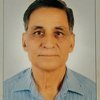
Prof. Dr. Akal Bahadur Singh
Prof. Dr. Singh was one of the founding Pragya in the old pre-1990 RONAST. Recently he has been spending much of his time thinking about the relationship between science and spirituality.
- Sensations, Perceptions And Concentrations
- May 02, 2024
- Insights And Inspirations
- Oct 01, 2023
- Reason, Understanding And Knowledge
- Jul 25, 2023
- Ideas, Actions And Experiences
- Sep 07, 2022
- Unity In Diversity
- Aug 16, 2022

